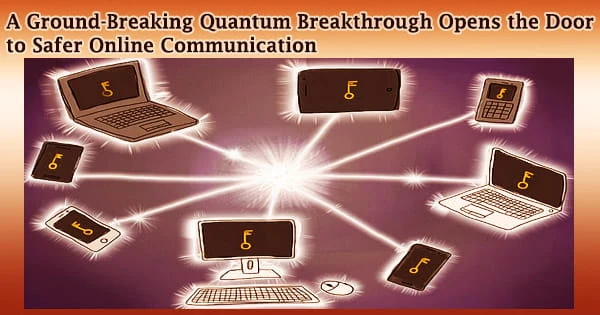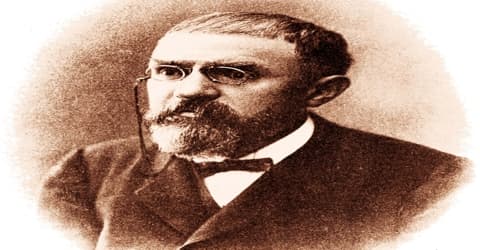Thanks to a group of international scientists who developed a unique prototype that could alter how we communicate online, the world is one step closer to having a completely safe internet and a response to the growing threat of cyber-attacks.
The University of Bristol’s invention, published 20th September 2020, in Science Advances, has the potential to serve millions of users, is thought to be the world’s largest quantum network, and could be used to secure people’s online communication, especially in these internet-driven times accelerated by the COVID-19 pandemic.
It can make messages fully safe from interception while also overcoming major difficulties that have hitherto hampered developments in this little-used but much-hyped technology by applying a novel technique that harnesses simple physical laws.
Lead author Dr. Siddarth Joshi, who headed the project at the university’s Quantum Engineering Technology (QET) Labs, said: “This represents a massive breakthrough and makes the quantum internet a much more realistic proposition. Until now, building a quantum network has entailed huge cost, time, and resource, as well as often compromising on its security which defeats the whole purpose.”
“Our solution is scalable, relatively cheap, and, most important of all, impregnable. That means it’s an exciting game-changer and paves the way for much more rapid development and widespread rollout of this technology.”
The present internet relies on complicated codes to safeguard information, but hackers are becoming increasingly competent at outsmarting such systems, resulting in global cyber-attacks that result in huge privacy breaches and fraud worth trillions of pounds every year.
With such costs expected to skyrocket, the case for finding an alternative is even stronger, and quantum has been heralded as the breakthrough replacement for traditional encryption systems for decades.
Physicists have so far established a form of strong encryption called quantum key distribution, in which light particles called photons are communicated. The method allows two parties to share a secret key used to encrypt and decrypt data without fear of being intercepted. However, this strategy has only worked amongst two people so far.
“Until now efforts to expand the network have involved vast infrastructure and a system which requires the creation of another transmitter and receiver for every additional user. Sharing messages in this way, known as trusted nodes, is just not good enough because it uses so much extra hardware which could leak and would no longer be totally secure,” Dr. Joshi said.
This represents a massive breakthrough and makes the quantum internet a much more realistic proposition. Until now, building a quantum network has entailed huge cost, time, and resources, as well as often compromising on its security which defeats the whole purpose.
Dr. Siddarth Joshi
The team’s quantum approach uses entanglement, an apparently supernatural property described by Albert Einstein as “spooky activity at a distance.” It takes advantage of the ability of two different particles placed in different locations, potentially thousands of kilometers apart, to mimic each other at the same time. Quantum computers, sensors, and information processing will all benefit greatly from this process.
“Instead of having to replicate the whole communication system, this latest methodology, called multiplexing, splits the light particles, emitted by a single system, so they can be received by multiple users efficiently,” Dr. Joshi said.
The team used only eight receiver boxes to construct a network for eight users, whereas the previous method would have required the number of users to be multiplied many times, resulting in 56 boxes in this example. The logistics become progressively unviable as the number of users grows; for example, 100 users would require 9,900 receiver boxes.
The receiver boxes were connected to optical fibers via several places across Bristol to demonstrate its usefulness over distance, and the ability to transmit messages via quantum communication was tested utilizing the city’s existing optical fiber network.
“Besides being completely secure, the beauty of this new technique is its streamline agility, which requires minimal hardware because it integrates with existing technology,” Dr. Joshi said.
The team’s unique approach also includes traffic management, which allows for greater network control, such as prioritizing particular users with a speedier connection. Previous quantum systems took years to build and cost millions, if not billions of pounds, but this network was built in months for less than £300,000.
While 100 users on earlier quantum systems might cost in the range of £5 billion, Dr. Joshi believes multiplexing technology could reduce that to roughly £4.5 million, or less than 1%.
Quantum cryptography has recently been used to secure ballots at a Swiss election and protect transactions between Chinese banking centers. However, the sheer magnitude of resources and expenses involved has limited its wider implementation.
“With these economies of scale, the prospect of a quantum internet for universal usage is much less far-fetched. We have proved the concept and by further refining our multiplexing methods to optimize and share resources in the network, we could be looking at serving not just hundreds or thousands, but potentially millions of users in the not too distant future,” Dr. Joshi said.
The consequences of the COVID-19 epidemic have demonstrated not only the relevance and potential of the internet, as well as our growing reliance on it, but also how critical its security is. Multiplexing entanglement could be the key to making this much-needed security a reality.
















